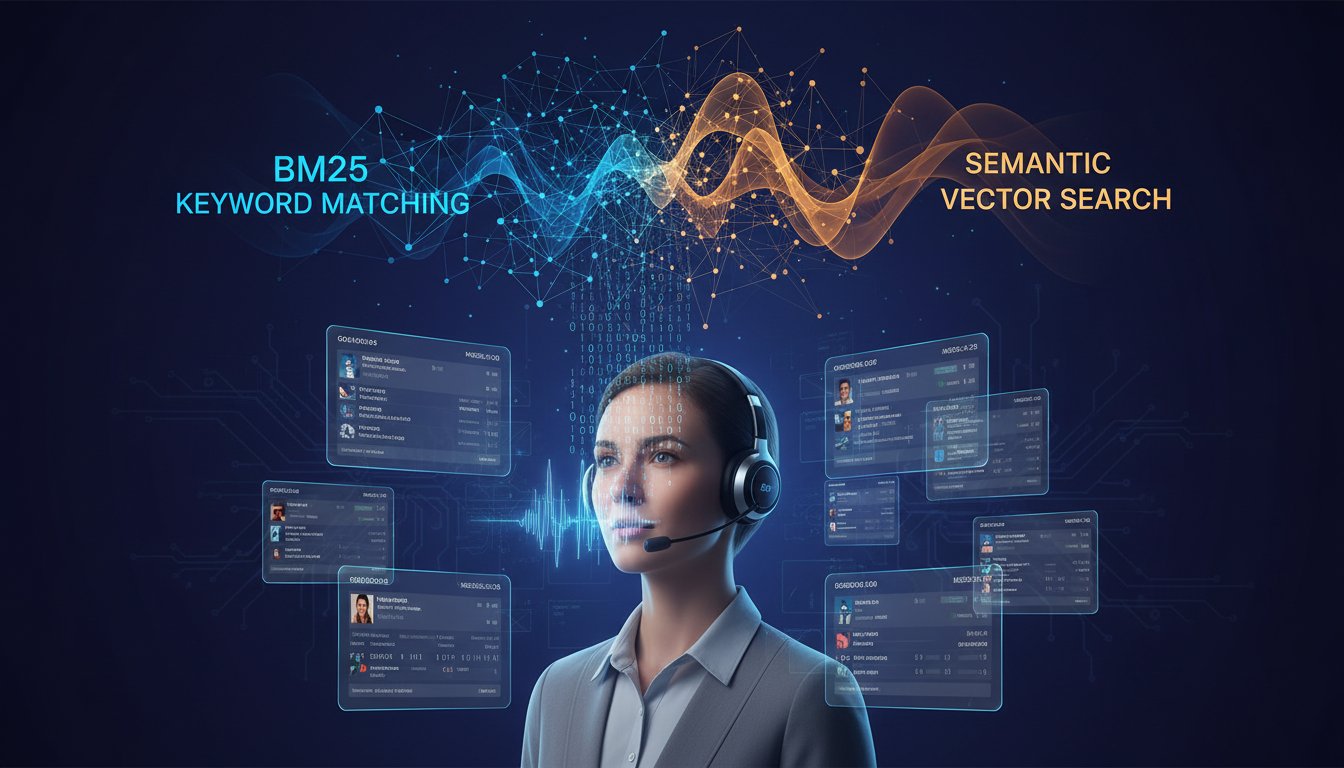Picture this: Your enterprise RAG system processes thousands of confidential documents daily, from financial reports to customer data. One misconfigured permission, and suddenly your AI assistant is sharing HR records with the wrong team. This nightmare scenario is becoming reality for companies rushing to deploy RAG systems without proper authorization frameworks.
Enterprise AI adoption has exploded, with 73% of organizations now using some form of AI-powered document retrieval. Yet a staggering 68% of these implementations lack proper access controls, creating massive security vulnerabilities. The cost of a data breach in AI systems averages $4.88 million—nearly 15% higher than traditional breaches.
The solution isn’t to abandon RAG technology. Instead, forward-thinking organizations are implementing robust authorization frameworks that secure their AI systems while maintaining performance and user experience. This comprehensive guide will walk you through everything you need to know about RAG authorization, from fundamental concepts to advanced enterprise implementations.
By the end of this article, you’ll understand how to architect secure RAG systems, implement proper permission models, and leverage cutting-edge tools like AuthZed’s new RAG-specific authorization infrastructure. Whether you’re a developer building your first enterprise RAG system or a security architect evaluating existing implementations, this guide provides the roadmap for bulletproof AI security.
Understanding RAG Authorization Fundamentals
RAG authorization goes far beyond traditional database permissions. When your AI system retrieves information from multiple sources to answer user queries, it must respect the same access controls that govern direct document access. This creates a complex web of permission inheritance and context-aware security decisions.
The core challenge lies in real-time authorization. Traditional systems can pre-filter data based on user permissions. RAG systems, however, must make authorization decisions dynamically as they retrieve, process, and synthesize information from multiple sources. A single query might touch dozens of documents across different departments, each with unique access requirements.
Consider a common enterprise scenario: An executive asks your RAG system about quarterly performance. The AI might need to access sales data (available to sales teams), financial reports (restricted to finance), and strategic plans (C-suite only). The system must understand not just what the user can access, but how to combine and present this information appropriately.
The Three Pillars of RAG Authorization
Authentication and Identity Management forms the foundation. Your RAG system must integrate with existing identity providers like Active Directory, Okta, or Auth0. This isn’t just about knowing who the user is—it’s about understanding their role, department, security clearance, and current project assignments.
Permission Inheritance and Context represents the most complex aspect. Documents don’t exist in isolation. A project report might inherit permissions from the project itself, the department that created it, and the classification level assigned by compliance teams. Your RAG system must understand these relationships and apply them consistently.
Real-time Decision Making ensures security without sacrificing performance. Modern RAG systems process queries in milliseconds. Authorization decisions must happen at the same speed, requiring sophisticated caching, pre-computation, and optimization strategies.
Implementing Enterprise-Grade Authorization Architecture
Successful RAG authorization requires a layered approach that addresses security at multiple levels. The architecture must be both comprehensive and performant, handling complex permission scenarios without introducing latency that degrades user experience.
Document-Level Security Integration
Start by implementing document-level security that mirrors your existing access controls. Every document ingested into your vector database must carry its permission metadata. This includes owner information, department restrictions, classification levels, and any special access requirements.
Modern vector databases like Pinecone and Weaviate now support metadata filtering that can enforce these permissions at query time. However, relying solely on database-level filtering creates performance bottlenecks and limits your system’s flexibility.
Instead, implement a hybrid approach. Use vector database filtering for broad permission boundaries (department-level access, classification levels) while handling fine-grained permissions in your application layer. This balance maintains query performance while ensuring comprehensive security coverage.
Query-Time Authorization Workflows
The magic happens when users submit queries. Your authorization system must:
- Authenticate the user and retrieve their current permissions
- Analyze the query to predict which document types might be relevant
- Pre-filter the search space based on broad permission categories
- Retrieve relevant documents using vector similarity search
- Apply fine-grained filtering to the retrieved results
- Generate responses using only authorized information
- Log access patterns for compliance and auditing
This workflow must complete in under 200 milliseconds for optimal user experience. Achieving this requires careful optimization of each step, including intelligent caching of permission data and pre-computation of common authorization scenarios.
Advanced Permission Models
Enterprise environments demand sophisticated permission models that go beyond simple role-based access control. Consider implementing attribute-based access control (ABAC) that considers multiple factors:
Temporal Permissions: Access that changes based on time, project phases, or employment status. A contractor might have access to specific documents only during their engagement period.
Contextual Access: Permissions that depend on the user’s current context. A manager might access team documents when reviewing performance but not when working on personal projects.
Need-to-Know Basis: Dynamic permissions based on current work assignments or security clearances. This requires integration with project management systems and HR databases.
Hierarchical Inheritance: Complex organizational structures where permissions flow through reporting relationships, department memberships, and project assignments.
Leveraging AuthZed for RAG Systems
AuthZed’s recent launch of RAG-specific authorization infrastructure represents a significant advancement in enterprise AI security. Their system addresses the unique challenges of authorization in AI contexts, providing purpose-built tools for RAG implementations.
The AuthZed Advantage
AuthZed’s approach centers on relationship-based authorization. Instead of managing complex permission matrices, you define relationships between entities: users, documents, projects, and organizational units. The system then computes permissions dynamically based on these relationships.
For RAG systems, this means you can express complex authorization rules naturally. “Users can access documents from projects they’re assigned to, unless the document is classified above their clearance level” becomes a simple relationship definition rather than complex conditional logic.
The system handles the computational complexity of checking these relationships at scale. AuthZed claims sub-10ms authorization decisions even for complex permission hierarchies involving thousands of entities.
Implementation Patterns
Integrating AuthZed with your RAG system follows established patterns. During document ingestion, you define the relationships between documents and organizational entities. When processing queries, you use AuthZed’s API to filter results based on the user’s computed permissions.
The key advantage is flexibility. As your organization changes—new projects, team reorganizations, policy updates—you update the relationship definitions rather than rewriting authorization logic. This dramatically reduces the maintenance burden of complex permission systems.
Performance Considerations
AuthZed optimizes for the authorization patterns common in RAG systems. They cache permission computations aggressively, pre-compute common scenarios, and provide bulk authorization APIs that reduce network overhead.
For high-throughput RAG systems, consider implementing authorization caching in your application layer. Cache permission decisions for common user-document combinations, invalidating the cache when relationships change. This approach can reduce authorization latency to under 5ms for cached scenarios.
Security Best Practices and Common Pitfalls
Implementing RAG authorization correctly requires attention to subtle security considerations that aren’t immediately obvious. Learning from common implementation mistakes can save months of rework and prevent serious security vulnerabilities.
Data Leakage Prevention
The most dangerous vulnerability in RAG systems is information leakage through AI-generated responses. Even if your system correctly filters documents, the AI model might inadvertently reveal information from unauthorized sources through its generated text.
Implement response-level filtering that analyzes generated content for potential leaks. This might include keyword detection, entity recognition, or even secondary AI models trained to identify sensitive information. While this adds latency, it provides crucial protection against subtle data leakage.
Consider implementing differential privacy techniques in your RAG responses. Add controlled noise to numerical data, generalize specific details, and avoid reproducing exact phrases from source documents. These techniques maintain response utility while preventing reconstruction of original sensitive information.
Audit and Compliance Integration
Enterprise RAG systems must support comprehensive auditing for compliance requirements. Every authorization decision, document access, and response generation should be logged with sufficient detail for forensic analysis.
Modern compliance frameworks like SOC 2, HIPAA, and GDPR have specific requirements for AI system auditing. Your logging system must capture not just what information was accessed, but how it was processed and combined. This includes vector search parameters, similarity scores, and the reasoning behind authorization decisions.
Implement real-time monitoring for authorization anomalies. Unusual access patterns, permission escalations, or failed authorization attempts might indicate security threats or system misconfigurations. Automated alerting can help security teams respond quickly to potential incidents.
Performance vs. Security Trade-offs
Every authorization check adds latency to your RAG system. Finding the right balance requires careful measurement and optimization. Implement comprehensive performance monitoring that tracks authorization overhead separately from other system components.
Consider implementing authorization levels based on sensitivity. Public documents might require minimal authorization checks, while classified information demands comprehensive verification. This tiered approach optimizes performance for common use cases while maintaining security for sensitive data.
Use authorization caching strategically. Cache stable permission relationships (organizational structure, role assignments) while computing dynamic permissions (project assignments, temporary access) in real-time. This balance maintains security while optimizing performance.
Advanced Implementation Strategies
Enterprise RAG authorization often requires sophisticated strategies that go beyond basic permission checking. These advanced techniques address complex organizational requirements while maintaining system performance and usability.
Multi-tenant Authorization
Many organizations need to support multiple tenants within a single RAG system—different subsidiaries, client environments, or business units. Each tenant must have complete isolation while sharing underlying infrastructure efficiently.
Implement tenant-aware authorization that adds tenant context to every permission check. Documents, users, and relationships must be scoped to specific tenants, with strict enforcement preventing cross-tenant access. This requires careful design of your data model and authorization logic.
Consider using tenant-specific encryption keys for sensitive data. Even if authorization fails, encrypted data remains protected. This defense-in-depth approach provides additional security for multi-tenant environments with varying security requirements.
Federated Authorization
Large enterprises often have multiple identity providers, permission systems, and organizational boundaries. Your RAG system might need to respect permissions from Active Directory, SharePoint, Salesforce, and custom applications simultaneously.
Implement federated authorization that aggregates permissions from multiple sources. This requires careful handling of permission conflicts, trust relationships, and performance optimization. Consider using a centralized authorization service that caches and normalizes permissions from different systems.
Pay special attention to permission synchronization. Changes in source systems must propagate to your RAG authorization layer quickly enough to maintain security without creating operational complexity. Implement change detection and incremental synchronization to handle large-scale permission updates efficiently.
Context-Aware Authorization
Advanced RAG systems consider the context of user queries when making authorization decisions. A user might have different permissions when accessing documents for their current project versus general research.
Implement context detection that analyzes query intent, current user activities, and organizational context. This might involve natural language processing to understand query purpose, integration with project management systems to determine current assignments, or calendar integration to understand meeting contexts.
Context-aware authorization enables more granular security policies while improving user experience. Users automatically get appropriate access based on their current activities without manual permission requests or complex navigation.
Monitoring and Optimization
Successful RAG authorization systems require continuous monitoring and optimization. Authorization performance directly impacts user experience, while security effectiveness determines your organization’s risk exposure.
Performance Metrics
Track authorization latency separately from overall query time. Authorization should consume less than 20% of total query latency in well-optimized systems. Monitor cache hit rates, permission computation times, and authorization API response times.
Implement synthetic monitoring that regularly tests authorization performance with realistic query patterns. This helps identify performance degradation before it affects users and provides baseline metrics for optimization efforts.
Monitor authorization accuracy through regular audits. Test edge cases, complex permission scenarios, and boundary conditions to ensure your system correctly implements security policies. Automated testing can catch regressions introduced by system updates or configuration changes.
Security Analytics
Implement comprehensive security analytics that identify potential threats and system weaknesses. Monitor failed authorization attempts, unusual access patterns, and permission escalations that might indicate security incidents.
Use machine learning to establish baseline user behavior patterns. Deviations from normal access patterns might indicate compromised accounts, insider threats, or system misconfigurations. Automated anomaly detection can provide early warning of security issues.
Regularly analyze authorization decisions to identify policy gaps or inconsistencies. Users who frequently request additional permissions might indicate poorly configured initial access, while documents that are never accessed might be over-restricted.
Continuous Improvement
RAG authorization systems must evolve with organizational changes, security requirements, and technology advances. Implement feedback loops that identify areas for improvement and track the effectiveness of security policies.
Regularly review and update permission models based on actual usage patterns. Permissions that are frequently overridden might indicate policy problems, while unused permissions might represent unnecessary complexity.
Stay current with authorization technology advances. New tools, techniques, and best practices emerge regularly in the rapidly evolving AI security landscape. Regular evaluation of new approaches can identify opportunities for improvement.
Implementing robust RAG authorization requires careful planning, sophisticated technology, and ongoing attention to security and performance. However, the investment pays dividends in enabling secure enterprise AI deployment that users trust and administrators can manage confidently.
The landscape of RAG authorization is rapidly evolving, with new tools like AuthZed’s RAG-specific infrastructure making enterprise-grade security more accessible. Organizations that invest in proper authorization architecture today will be positioned to scale their AI initiatives securely while maintaining compliance and user trust.
Ready to implement bulletproof RAG authorization in your organization? Start by auditing your current AI systems for security gaps, then design a comprehensive authorization architecture that addresses your specific requirements. The combination of proper planning, modern tools, and continuous optimization will create RAG systems that are both powerful and secure. Consider partnering with authorization specialists or investing in purpose-built tools like AuthZed to accelerate your implementation while ensuring enterprise-grade security from day one.




